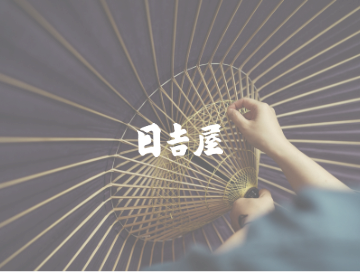A journey where a craftsman meets a craftsman







Terashima Yasutarou Shoten Co,ltd / Terashima Daigo Kyoto
Terashima Yasutaro Shoten / Terashima Daigo, Kyoto
Inheriting the 500-year tradition of making gold and silver threads in Kyoto
Gold and silver threads have a metallic luster that no other fibers can imitate and they are still an indispensable element of the Japanese craftsmanship of today. The oldest textiles using gold threads have been found in ancient tombs dating back to the 6th century.
It is said that gold and silver threads, which originally came from the continent, began to be produced in Japan during the Azuchi-Momoyama period (1573-1600). Mr. Daigo Terashima, the fourth generation head of Terashima Yasutaro Shoten, explains about the relationship between Nishijin and gold threads as follows.
« The name Nishijin came into being because of the Onin War, a struggle for heirs during the Muromachi period (1336-1573). After the war, the textile industry flourished as Kyoto was rebuilt, and textiles from the district were called "Nishijin textiles". Around that time, gold and silver mines were developed by warlords such as Shingen Takeda and Kenshin Uesugi. Gold and silver foils were also produced locally. This perhaps was the beginning of domestically produced gold and silver threads, some 500 years ago. »
In addition to high-end kimono made in Nishijin, gold threads from Terashima Yasutaro Shoten were used in decorative curtains for festivals in various regions such as the Gion or Danjiri Festival, for the ornamental aprons of the sumo wrestlers, and the costumes of Kabuki and No actors. Nowadays, the company is often asked to restore items made 150 to 200 years ago.
From Kanazawa to Kyoto, connecting delicate craftsmanship
To begin with, gold and silver threads are made by applying gold or silver foil to Japanese paper by cutting it into very thin strips and wrapping it around a core thread.
This sounds quite simple but in reality, a relay of delicate and skillful works are required.
The laborious process consists of the making of the foil, the foil pressing, the application of the foil to the Japanese paper, and the twisting of the thread. For example, the applied gold and silver foil imported from Kanazawa is only 3/10000 of a millimeter thick. It is said that one gram of gold is beaten, stretched and spread over a length of about 30 tatami mats (about 50 m) to finally achieve this thinness.
"The leaf is pasted onto the washi paper. In order to achieve the beautiful metallic luster, it is necessary to apply lacquer to the paper to smooth out the rough surface. This preparation is extremely important, however lacquer is very difficult to work with as its condition changes depending on the temperature and humidity. If the lacquer is too liquid, it sinks into the washi and cannot serve as a base, if it is too hard, it cracks when dry and cannot be twisted. The skilled craftsman's intuition is necessary to create the best lacquer. His ability to discern the subtle differences cannot be converted into data, such as how the lacquer is mixed and how it falls when dropped."
In a next step, the foil-stamped washi paper is cut. The width of the cut depends on the thickness of the gold and silver threads measuring 0.8 mm for the thin ones, and 2 mm for the thick ones. Then, depending on the intended use, the thickness and material of the core yarn is selected. In the twisting process, the craftsmen particularly show their skill by twisting the foil so that it does not turn inside out or leave gaps.
A daring creation - turning a bundle of gold threads into jewelry
Mr. Terashima has been supplying gold and silver threads made with great care as materials for a variety of crafts. A major turning point came in 2017 with the challenge of the « Contemporary Kyoto » project organized by the Kyoto Chamber of Commerce and Industry and the Fashion Promotion Council Kyoto with the support of the Kyoto Prefectural Government. I was entrusted to be the producer of this project and it was there that I met Mr. Terashima for the first time.
When one of the advisors saw the bundle of gold threads that Mr. Terashima had brought, he said he wanted to make use of the texture of the gold thread tassels just as they were. So they decided to bundle the gold threads and make a jewelry prototype, something that Mr. Terashima had never thought of.
"To be honest, when I received the prototype, I thought, is this really what I wanted? But everyone involved said that it looked amazing. I was the only one who was a bit puzzled, but I was also the least able to judge the matter. Working all my life in this business, I had assumed that gold and silver threads were materials for weaving, embroidery, and kumi-himo (braided cord), and that they had to be processed into such items in order to create value. I think I missed the fact that these threads themselves are of great beauty."
I understand these feelings all too well because I am also a craftsman. What is important is to rediscover from an outside perspective the value of our own craftsmanship, which we tend to overlook because we are in close contact with it every day. It was through this process of rediscovery that Mr. Terashima launched his new jewelry brand « Tabane ».
The luster of the tassels made of bundled gold threads is beautiful and the fact that the tassels can be used straight or twisted, allowing the user to arrange them freely, is also an attractive feature. When exhibited at the Tokyo Gift Show « Tabane » was well received by buyers. « Tabane » jewelry was selected to be exhibited and sold at various department store events.

